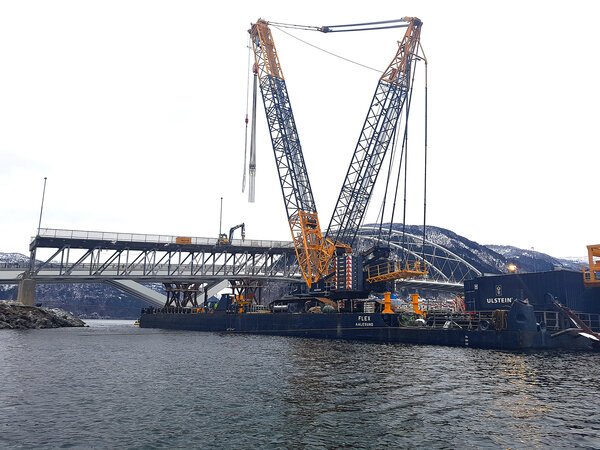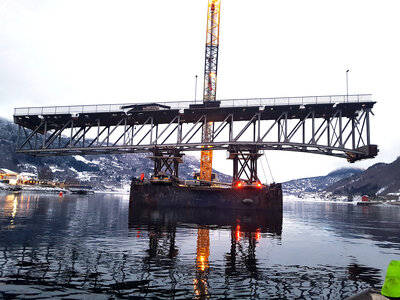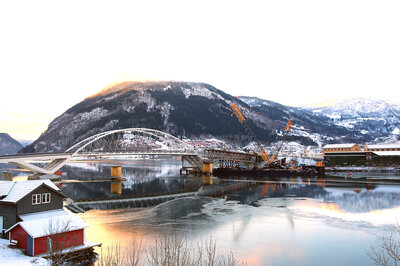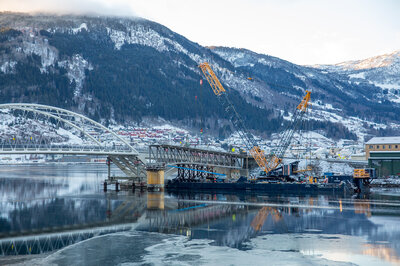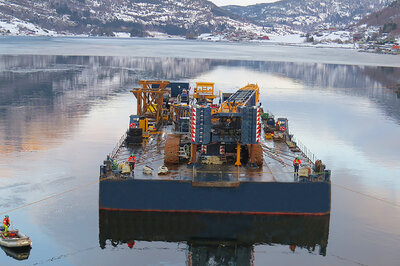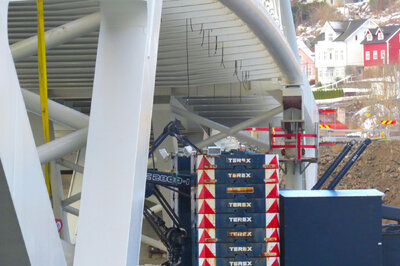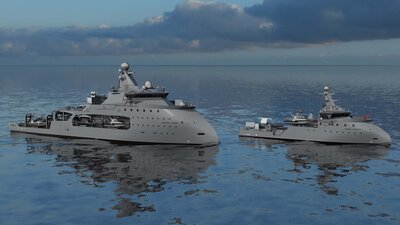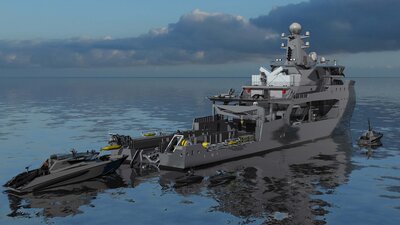NPRA stands for the Norwegian Public Roads Administration (NPRA). The old bridge over the Loftesnes strait in Sogndal was built in 1958. The clinker built bridge was standing on wooden piles and too narrow for modern standards. Ulstein Verft's service department was assigned the task of dismantling the bridge.
"The demolition of the bridge must be carried out carefully where the old bridge gets close to the new", said the project manager at NPRA, Gunnar Solbakken, before the demolition work took place.
When the new bridge opened on 30 November 2017, the demolition of the old bridge could commence. The heavy lift department at Ulstein Verft used their barge, multiwheeler and large mobile crane to carry out the work.
"The bridge was cut in smaller parts up to 120 tonnes, which we hoisted away and placed on land. The bridge foundations were also removed. Our mobile crane is capable of lifting up to 400 tonnes when positioned on the barge, so this was an easy job", says Jostein Sørnes, who is responsible for the heavy lift work at Ulstein Verft.
He adds: "Our biggest challenge was the passage height underneath the new Loftesnes bridge. When we are out travelling with the barge, our crane is dismantled, yet our height is 21 metres, while the height below the bridge is 10 metres. We had to completely strip down the crane prior to passing under the bridge."
"A total of five people from Ulstein were working on this assignment for about a month, a major task that included all in our department. Our division's services are in great demand. We returned from Sogndal this week and will immediately commence on our next assignment. We operate along the whole coast of Norway, and can also take on work abroad", states Sørnes.
